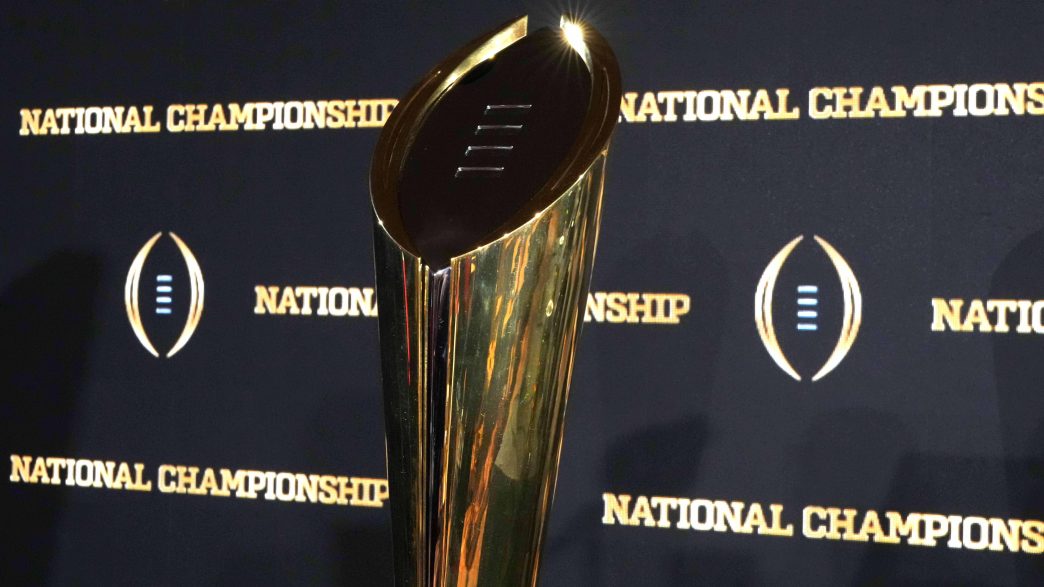College football fans are a passionate bunch, but some are never happy, especially when it comes to change. The 12-team College Football Playoff kicked off this past season, and while some fans embraced the expanded field, others swore it was the end of the sport as we know it. Now, a new proposal to expand to a 16-team playoff is picking up steam, according to Yahoo Sports’ Ross Dellenger, and it’s got the fanbase split again—some are intrigued, others are ready to storm the gates.
Let’s break down what this 16-team format would look like. The Big Ten and SEC, the heavyweights of college football, would each get four automatic bids. The ACC and Big 12 would nab two apiece, the Group of Five (G6) would get one, and there’d be three at-large spots to round things out. One of the big changes? No more first-round byes—every team would have to play in the opening round. The top eight seeds would host those first-round games on campus, with the winners advancing to the quarterfinals, which would be played at bowl sites. It’s a cleaner bracket, more like the NCAA Tournament, where seeding is based on merit after qualification, not just conference titles.
Here’s where it gets interesting: the Big Ten and SEC are pushing for play-in games to determine their playoff representatives. Picture this in the Big Ten: the top two teams face off for the conference title, and both are guaranteed playoff spots. Meanwhile, the No. 3 team plays No. 6, and No. 4 takes on No. 5 in play-in games. The winners punch their tickets to the playoff, but here’s the kicker—even the losers can still make it as at-large selections. The SEC would follow the same model. For the ACC and Big 12, their conference championship games would likely send both participants to the playoff, making those matchups more about seeding than just a trophy.
This setup makes a lot of sense, especially with the unbalanced schedules in these massive 16- or 18-team conferences. Finish in the top six in the Big Ten or SEC, and you control your own destiny—no more relying on polls or committee opinions to decide your fate. It takes the subjectivity out of the equation, which has been a sore spot for fans ever since the BCS days. The 12-team format’s automatic byes for the top four conference champs have been a sticking point—why should a team get a free pass just for winning their league, especially if they’re not among the best overall? A 16-team field levels that out, forcing every team to earn their way through the bracket, just like in March Madness, where a No. 1 seed can come from a conference champ or an at-large bid.
Now, not everyone’s on board. Fans are grumbling about the automatic berths, especially the Big Ten and SEC getting four each. It’s understandable—nobody loves the idea of the big dogs getting even more power. But let’s be real: the Big Ten and SEC already run college football. They’ve got the most talent, the biggest fanbases, and the deepest pockets—last season, they combined for nine of the top 15 teams in the final AP Poll. Pretending otherwise is just ignoring reality. This format at least ensures the ACC, Big 12, and G6 get a seat at the table while settling more debates on the field, not in some committee room.
The play-in system for the Big Ten and SEC also keeps their championship weekends relevant. Those title games aren’t going anywhere—conferences love the TV revenue and prestige—but this setup ensures they’re not the only path to the playoff. A team that finishes third or fourth still has a shot, which is huge in conferences where a tough schedule can lead to a couple of losses but doesn’t mean you’re out of the national picture. Think about a team like Ohio State last year—11-2, third in the Big Ten after a brutal slate, but they still made the 12-team playoff and reached the quarterfinals. Under this new system, they’d have to prove it in a play-in game, but they’d get the chance.
Is this 16-team format perfect? Not by a long shot—none of the playoff proposals have been. But it’s a step forward. It takes more guesswork out of the selection process, gives more teams a fair shot, and creates a bracket that feels cleaner and more merit-based. Fans might still grumble about the big conferences getting their way, but when the alternative is endless debates about polls and conference comparisons, this feels like progress. College football’s always evolving, and this change could bring more clarity—and more excitement—to the postseason. What do you think—does this fix the playoff, or are the naysayers right to keep sounding the alarm?







